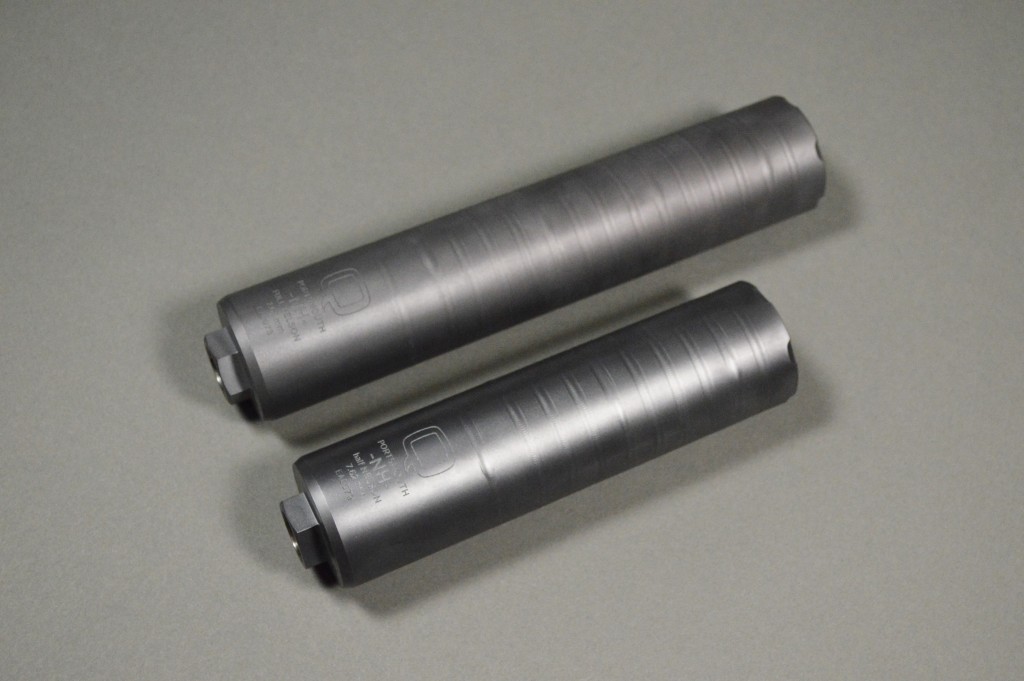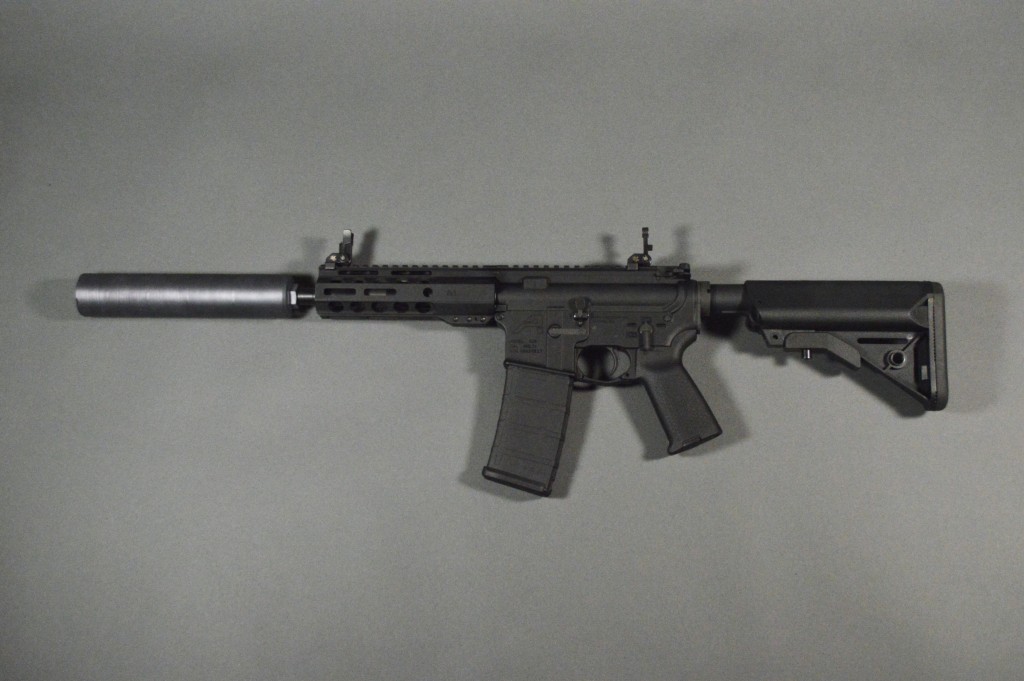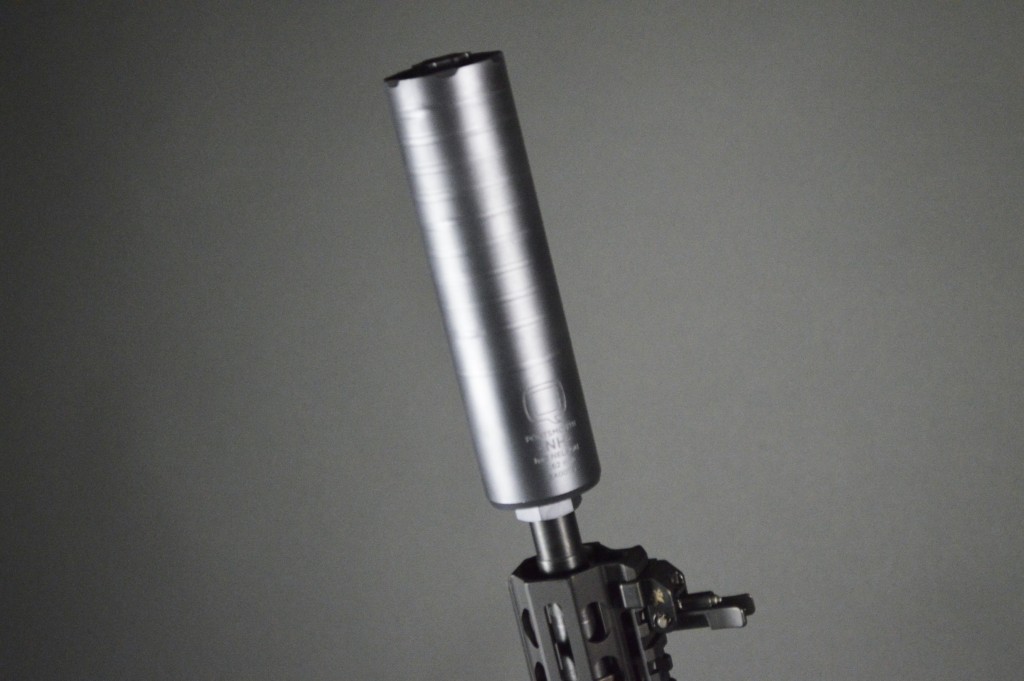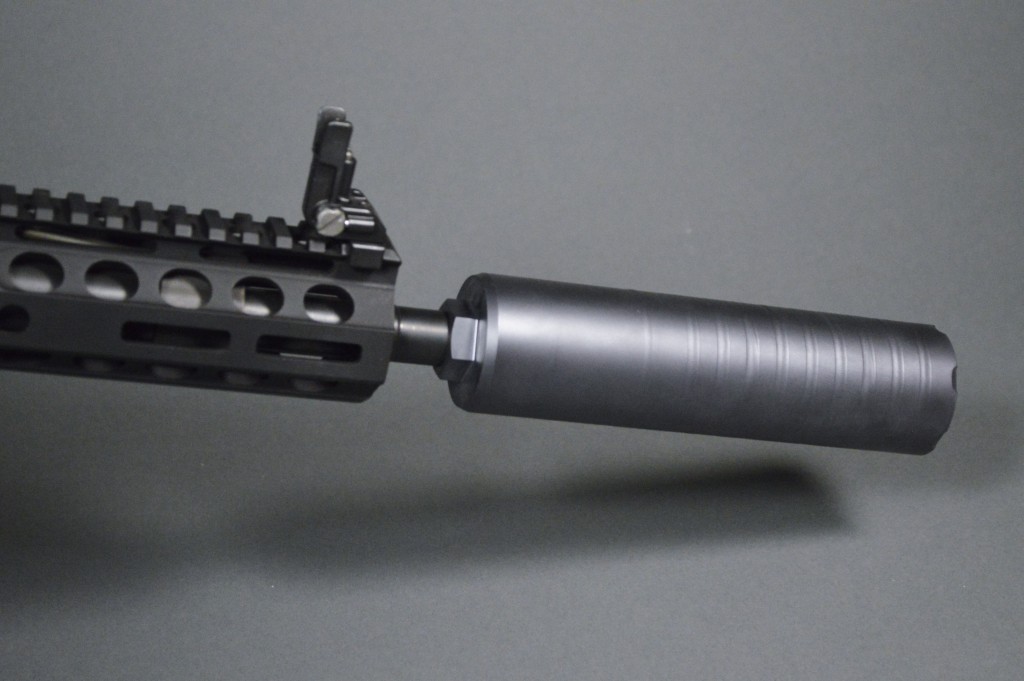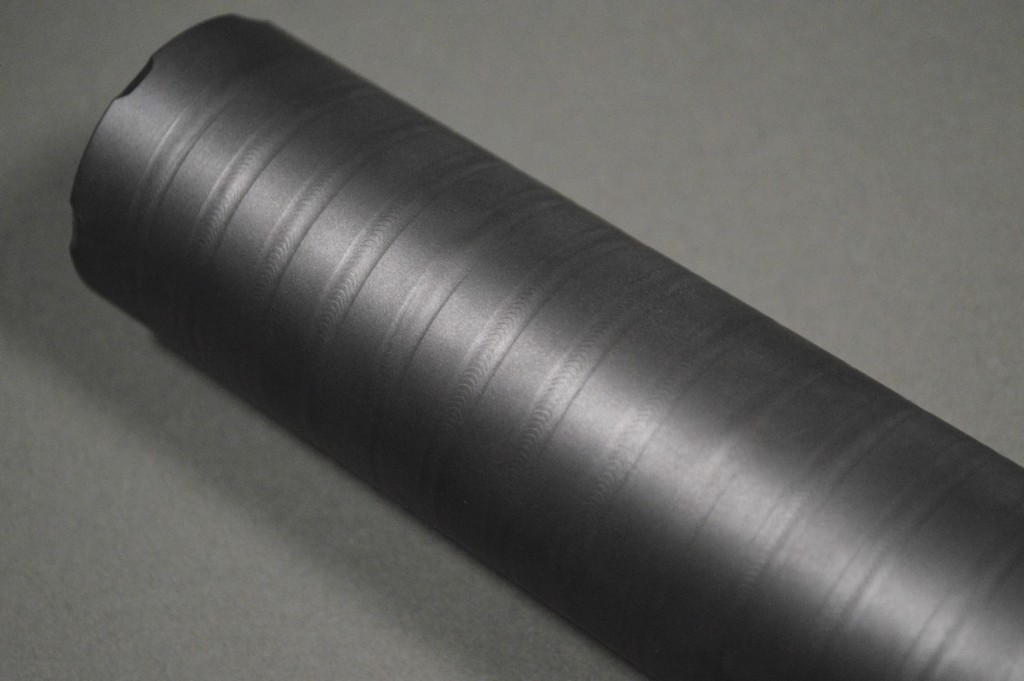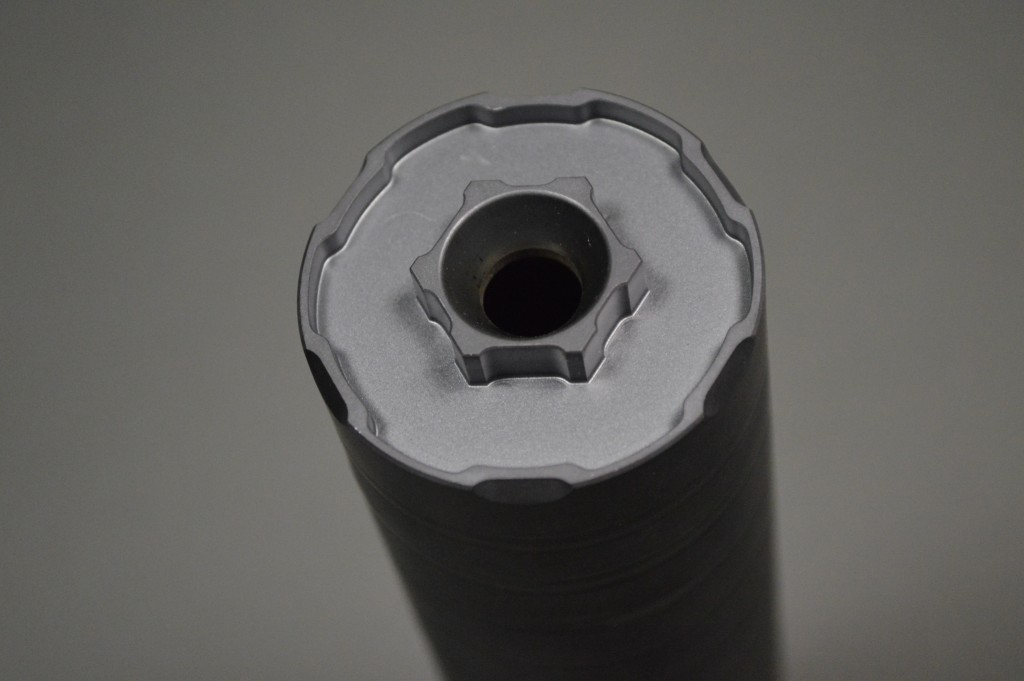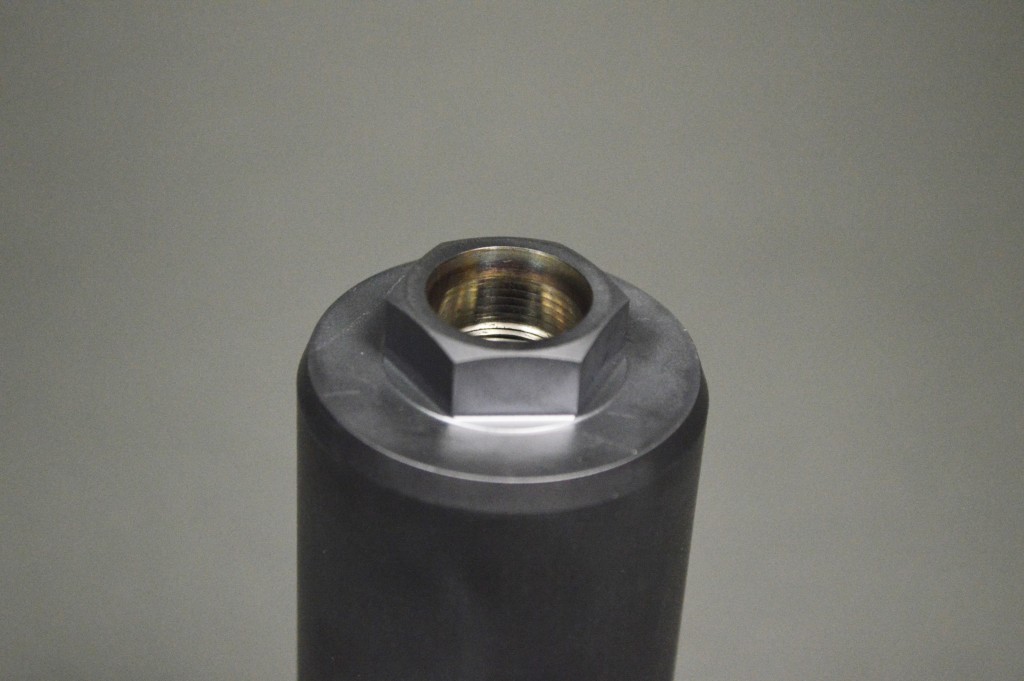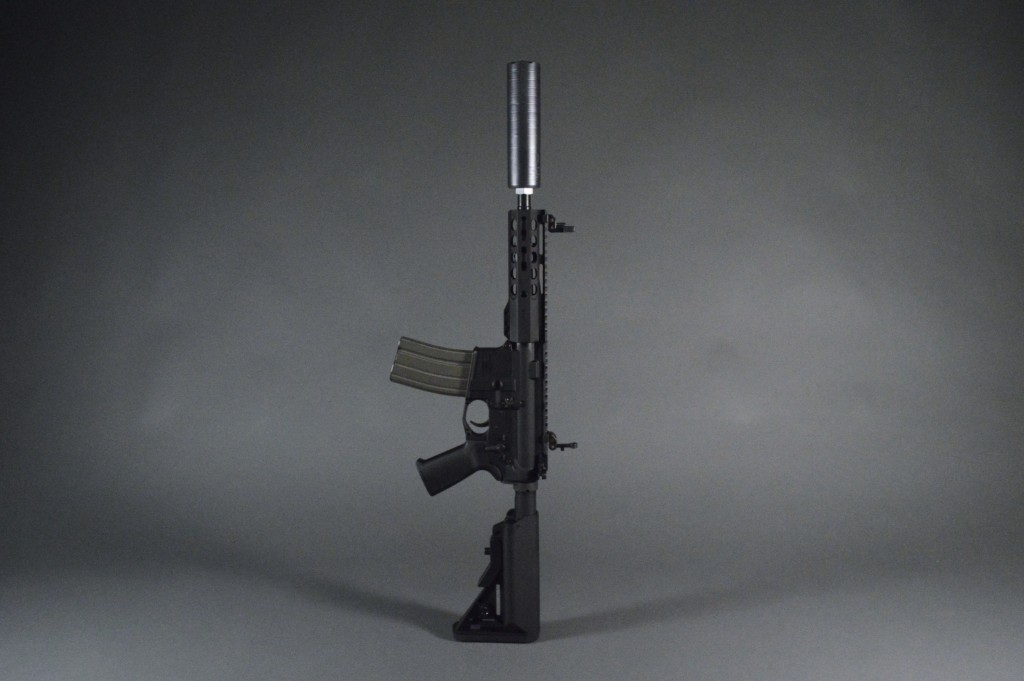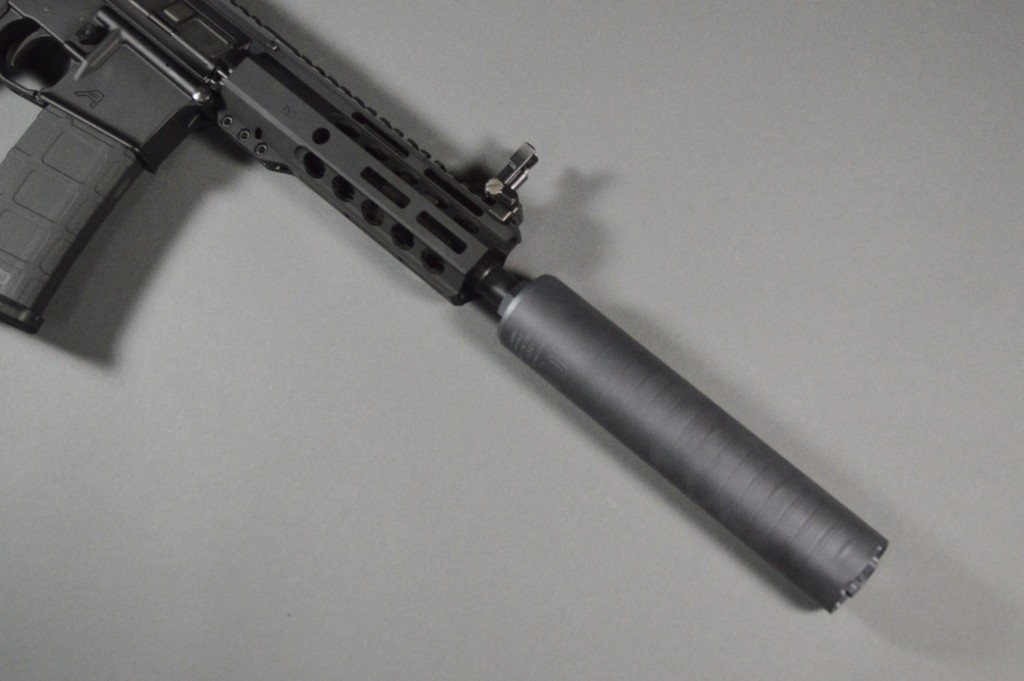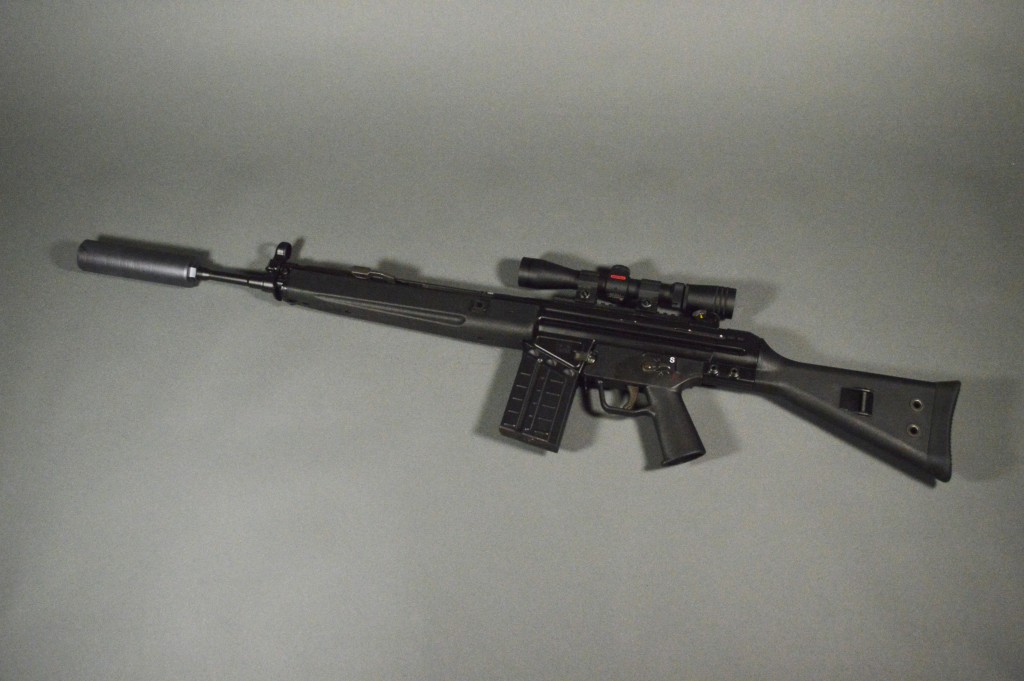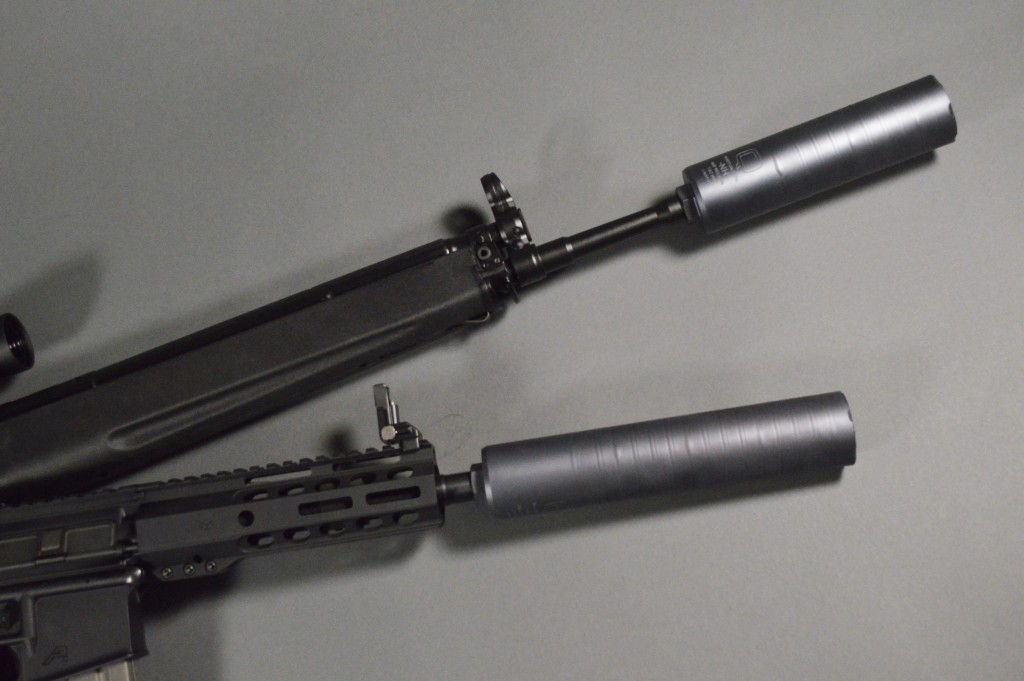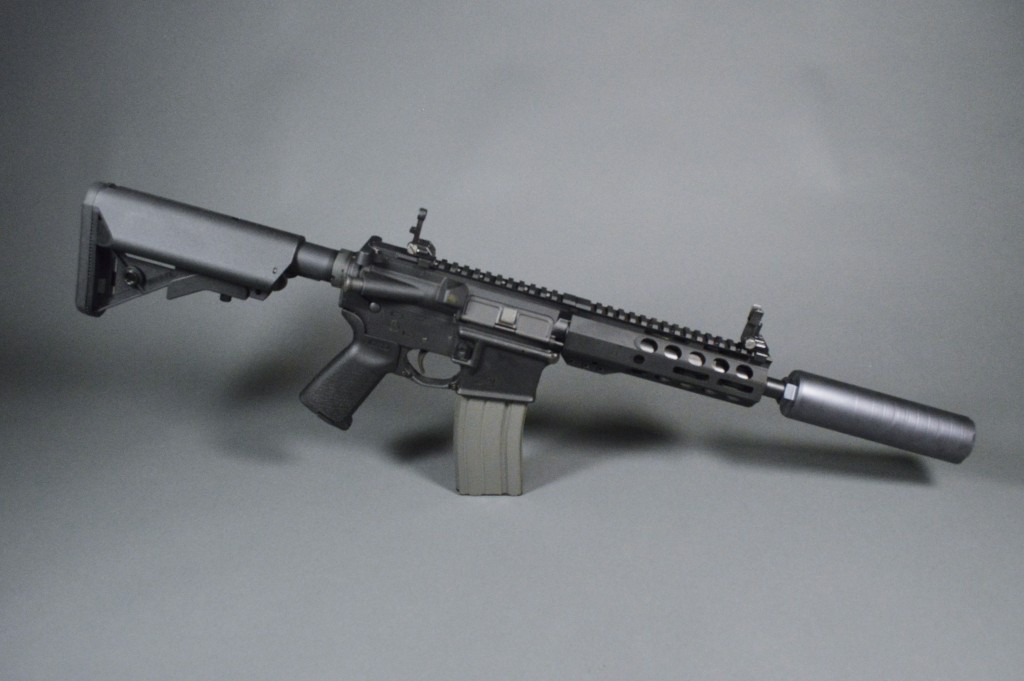Silencer Shop Authority: Q Full and Half Nelson Review
While at SHOT Show last January, I had the immense privilege of attending an event called Q Ball. As you might suspect, given the location and the name, Q Ball was a party thrown by none other than the folks at Q and while it was a raucous event to say the least, it was also a first-glimpse opportunity to lay eyes on a variety of new products from the young company. Unfortunately, I was only able to do just that – look at them – as the new firearms and suppressors were displayed in glass cases and not out for handling.
Now, having tested Q’s El Camino last fall, I knew that whatever else the company had brewing would be well worth my time. The El Camino topped the .22 LR performance charts and did so as one of the lightest silencers I’ve examined. However, with plenty of irons in the fire, Q’s follow-up to the El Camino has taken a little longer than I anticipated. Fortunately, the flood gates seem to be opening at the company’s Portsmouth, New Hampshire headquarters. No, the nearby Atlantic Ocean isn’t literally flooding the facility, but new offerings are starting to flow out the door.
Today, we will take a close look at Q’s new Full Nelson and Half Nelson silencers. These creatively-named suppressors are both tubeless .30 caliber cans that are made entirely out of titanium and mount via standard 5/8-24 threads. Since they’re mostly the same, aside from length, this review will cover both suppressors. Let’s dig in!
Size & Weight
Sorry folks, if you were hoping that the Half Nelson would truly be half the size of a Full Nelson, you’re going to be disappointed. Since I doubt anyone really thought that, most should be happy to hear that there’s enough difference between the two to make each compelling individually. The Half Nelson is on the short end of the .30 caliber spectrum at just 6.75” in length. Meanwhile the Full Nelson sits at a full-size 8.75”. Each fit into a distinct .30 caliber category, which leaves room for serious enthusiasts to pick up both if desired.
The Nelsons differ from most .30 caliber silencers in one major way – they’re 1.75” in diameter, not 1.5” as is “standard”. SIG’s titanium designs are unsurprisingly similar, as Kevin Brittingham along with a few others at Q were intimately involved with those designs as well. The additional 0.25” in diameter makes a stark difference that is advantageous to performance, but I won’t talk about that quite yet. One thing that shoppers will want to note is that the Nelsons probably won’t fit under many handguards.
Weight is an area where the Nelson series really impresses. Despite being nearly 9” long, the Full Nelson weighs just 16.6 ounces. The days of 20+ ounce suppressors may as well be over, at least for most of us. Unless you’re looking to really beat the hell out of a can, I just don’t see any reason to go with something that heavy. Meanwhile, the Half Nelson comes in at just 12.2 ounces. Q’s new suppressors are truly testaments to just how light fully-titanium silencers can be.
Materials & Design
As previously stated, the Nelson brothers are made entirely out of titanium. When I first got into suppressors, I distinctly remember questioning the durability of titanium cans. Now, I think they’re the way to go for most civilian shooters. Experience with a wide variety of silencers has taught me that I prioritize weight (or lack thereof) with far greater emphasis that I once believed. There’s surely a durability penalty associated with using a fully titanium suppressor, but I strongly doubt many of us come close to the sort of firing schedules required to notice.
The outside of both suppressors sports a dark gray Physical Vapor Dispersion (PVD) finish. PVD is a slick, film-like finish that is common in the firearms industry. Aside from the Nelsons, SIG uses PVD on their silencers, Beretta employs it on their magazines, and several AR-15 parts manufacturers use TiN-based PVD finishes on things like bolts and bolt carriers. In general, PVD is slick, easy to clean, and reasonably durable. The only “issue” I’ve had with it is that it shows oil and dirt very easily, for whatever that’s worth.
Perhaps the Nelsons’ most unique design element is their conspicuous lack of an outer tube. Tubeless suppressors aren’t exactly new or even rare at this point, with SIG, SilencerCo, and others well aboard that train. However, I do feel that they will continue to gain popularity into the future. Foregoing the silencer’s outer tube saves considerable weight and since almost every company fully welds their baffle stacks, the added strength of the exterior casing really isn’t necessary, at least for most use cases. Q apparently isn’t worried about durability, as they’ve rated the Nelsons for use with rounds up to .300 Winchester Magnum and have also given the green light to fully-automatic goodness. Full-auto use is limited to 10″ barrels and longer on 5.56mm hosts and 12″ and longer on .308 rifles.
Dumping the tube also offers some performance advantages that may not be immediately obvious. With a standard 1.5” diameter, tubed suppressor, the interior diameter of the silencer’s core is actually well below 1.5”, thanks to tube and baffle wall thickness. The Nelson’s on the other hand, are tubeless 1.75” diameter cans. Their relative wall thickness is thinner than tubed designs and they’re wider from the get-go. This means the guts of Q’s silencers offer significantly greater volume for gas expansion and better performance.
From a baffle design standpoint, the Full and Half Nelson are fairly standard. They both employ conical baffles and all but the reinforced blast baffle feature bore apertures with stepped ports. The ports help to disrupt the flow of gas through the can by creating turbulence, which significantly improves suppression. Each baffle’s cone also sports a couple of small port holes roughly hallway up the slope.
In contrast to most of their competitors, the Nelsons feature tightly packed baffle stacks with very little expansion space between each face. This, along with the tubeless construction, is another area where Q’s product shares similarities with the SIG SRD series. Conventional wisdom has held that packing too many baffles inside a suppressor eventually hits a point of diminishing returns and can hinder performance if too much internal volume is sacrificed. The other reason manufacturers typically limit the baffle count is weight. The added internal structure doesn’t come without weight penalties and when working with stainless steel or denser alloys, the ounces pile on quickly. Q’s wide-body, all-titanium design addresses both challenges.
Since the Nelsons are thread mount suppressors and are intended for .30 caliber rifles, they feature standard 5/8-24 threads. However, like the SIG cans, they also sport a taper at the thread mouth that engages a complementary surface on the shoulder of Q’s barrels, like those found on the Honey Badger and The Fix. I really like the tapered shoulders in theory, but I don’t have any barrels with them. They help to keep the silencer in place during use and ensure proper alignment. 22mm wrench flats are also available to help snug the Nelsons to their host firearms.
Range Report
In my limited experience with .30 caliber silencers that are above 1.5” in diameter I have found that they absolutely own .300 Blackout (BLK). The Full and Half Nelson now join this rather exclusive club. Other than maybe the SIG SRD762Ti series, I’m not sure anything else really comes all that close to suppressing subsonic .300 BLK as well as the Nelsons, particularly the Full Nelson.
The reason that these large diameter silencers seem to work so well with .300 BLK likely has to do with the low relative pressure of the round. The slow-moving gasses behind a subsonic .300 BLK bullet are afforded enough time to expand laterally out to the silencer’s perimeter, filling the suppressor more efficiently than faster moving gasses, like those from a .308, that want to blow out through the end of the silencer.
As I mentioned, .300 BLK is where the Full Nelson is especially impressive. Mounted to the 8.5” barrel on my .300 BLK AR-15, the Half Nelson was certainly hearing safe, but it was noticeably louder than the Full Nelson. The Full Nelson was very, very impressive on this rifle. I could easily have used it all day without any additional hearing protection. If I had to guess, the Full Nelson probably offers at ear performance in the 130-133 dB range when used with a semi-automatic .300 BLK rifle. The Half Nelson would then likely fall in the 135-138 dB realm. Enough to be clearly louder than the Full version, but not so loud as to be uncomfortable.
If you’re a .300 BLK shooter who is in the market for a suppressor and are torn between these two options, my call would be to go with the Full Nelson. Yes, it is quite a bit larger than the Half, but it just performs incredibly well. The added size isn’t such a big deal on a tiny short-barreled rifle (SBR) like mine and 16.6 ounces is hardly what most suppressor enthusiasts would consider heavy.
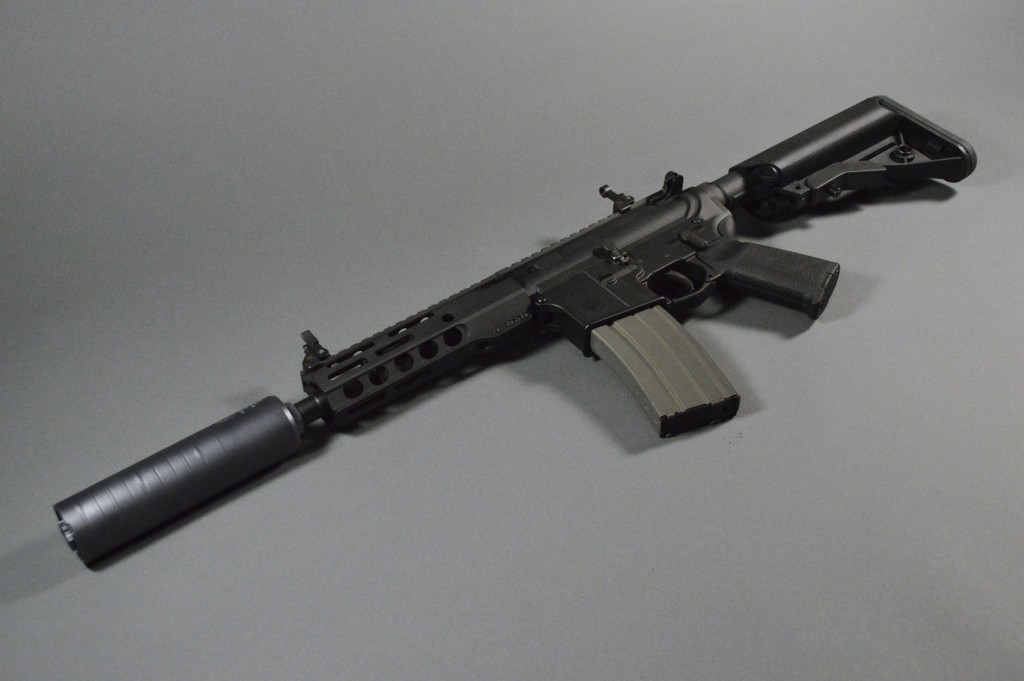
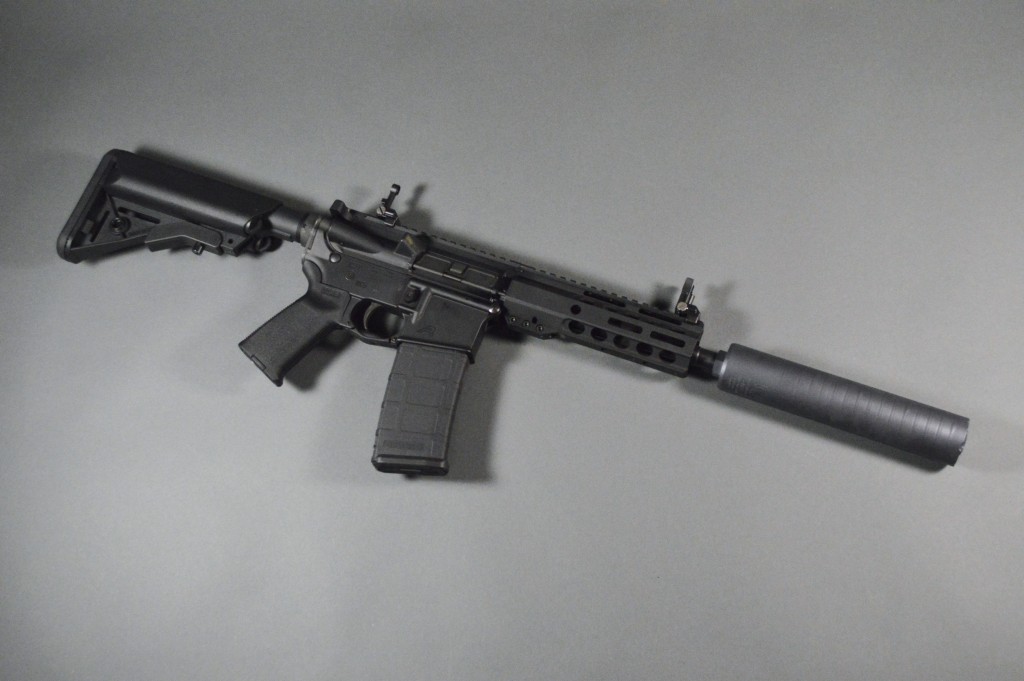
Moving the Nelsons over to my .308 PTR-91 flips my preference. Whereas my .300 BLK choice was the Full Nelson, I would roll with the Half on a .308. There are a few reasons for this.
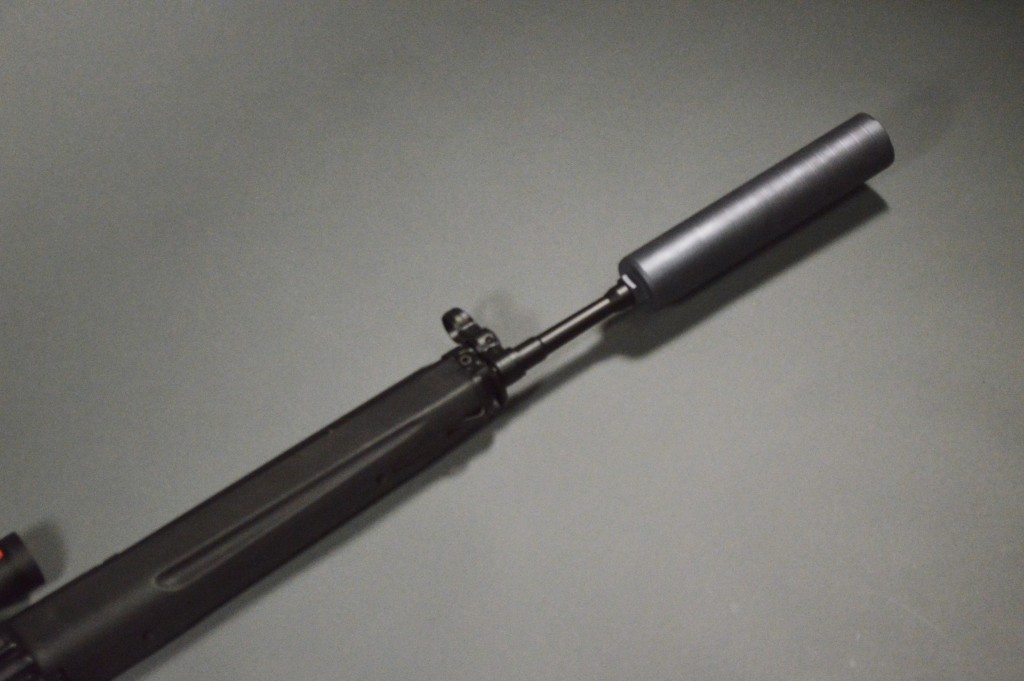
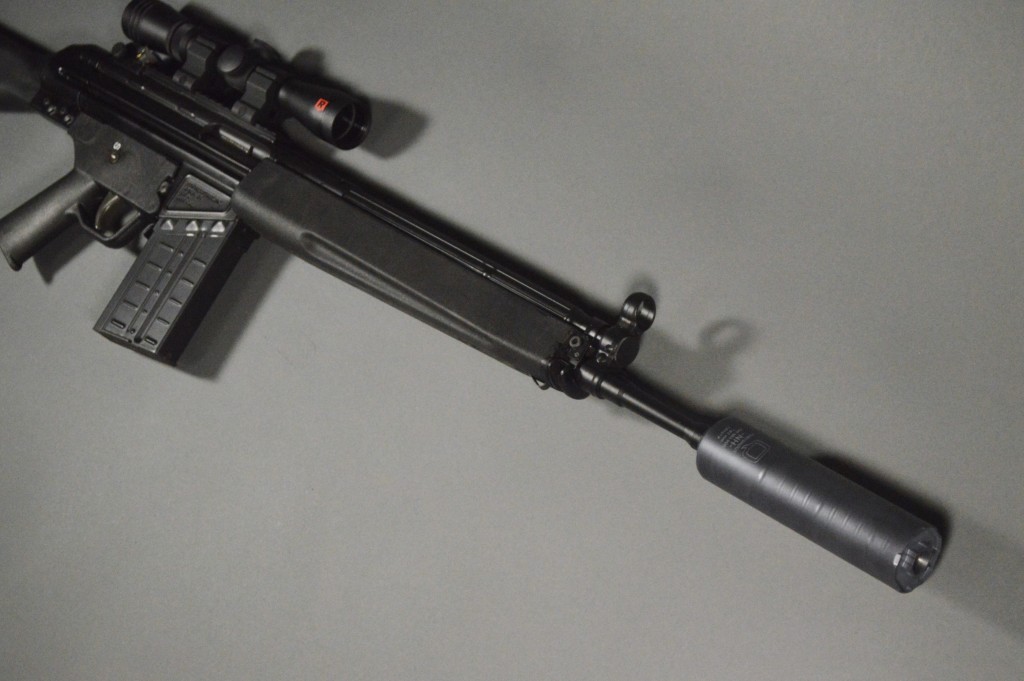
First, the featherweight Half Nelson was far more enjoyable at the end of the rifle’s 18” barrel. The PTR is almost entirely steel and it’s not at all lightweight. For that rifle, I’ll take a 12-ounce silencer over a 16-ounce barrel topper ten times out of ten. Second, the at-ear sound experience between the two when used with supersonic .308 just isn’t all that different. If anything, the Half Nelson generated less backpressure and sounded marginally better behind the gun. Regardless, I think they’re both close enough to the OSHA 140 dB “hearing safe” threshold for impact noise and I recommend on-ear hearing protection if you’re going to be firing any more than a handful of rounds through the gun. Elsewhere, the Full Nelson is the quieter can at the muzzle and will sound quieter to anyone who isn’t actually using the rifle.
As far as point of impact (POI) shift goes, the Half Nelson beats the full. On my PTR (which is admittedly sensitive to POI shift), the Half Nelson contributed two minutes of arc (MOA) of downward shift, while the Full pulled in four to five MOA south of the bare muzzle groupings. The important thing about that sort of shift is that in absolute numbers, it grows as your target gets farther away. Five MOA is five inches at 100 yards, ten at 200, fifteen at 300, so on and so forth. On a rifle with long range capabilities like the PTR, I’ll take the lighter silencer with less shift.
Conclusion
If it isn’t already obvious, I am a massive fan of large diameter, tubeless .30 caliber silencers. The Half and Full Nelson are two of only a handful of options in this category and they represent it (and Q as a company) very well. While they’re similar to Kevin’s past efforts at SIG, the Nelsons offer enough differences to distinguish themselves from their in-state rivals. Notably, they’re lighter (far lighter in the Half’s case) and shorter than either of SIG’s titanium options. Performance is as expected – the cans shine on .300 BLK and still put up a great showing with .308/7.62x51mm. They aren’t especially unique in the backpressure department, but they also aren’t what I would consider poor performers.
In the end, the Nelson bros. comfortably sit among my top four or five .30 caliber choices. If you’re looking for an almost impossibly lightweight silencer with excellent .300 BLK sound reduction, solid .308 performance, and you don’t mind threads over a QD mount, the Nelsons are worth a look. You can find these two at Silencer Shop for a round $800 to $850, depending on the specific model and Powered By dealer pricing.
This has been a review of products provided by, and sold at Silencer Shop. All opinions are my own.
An information security professional by day and gun blogger by night, Nathan started his firearms journey at 16 years old as a collector of C&R rifles. These days, you’re likely to find him shooting something a bit more modern – and usually equipped with a suppressor – but his passion for firearms with military heritage has never waned. Over the last five years, Nathan has written about a variety of firearms topics, including Second Amendment politics and gun and gear reviews. When he isn’t shooting or writing, Nathan nerds out over computers, 3D printing, and Star Wars.



